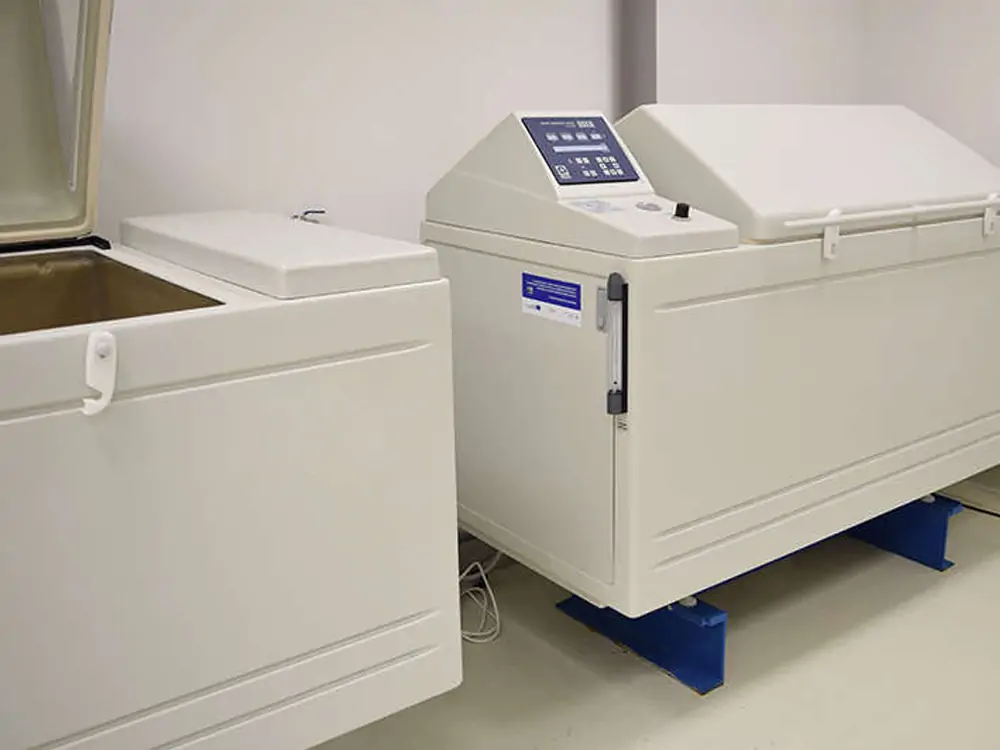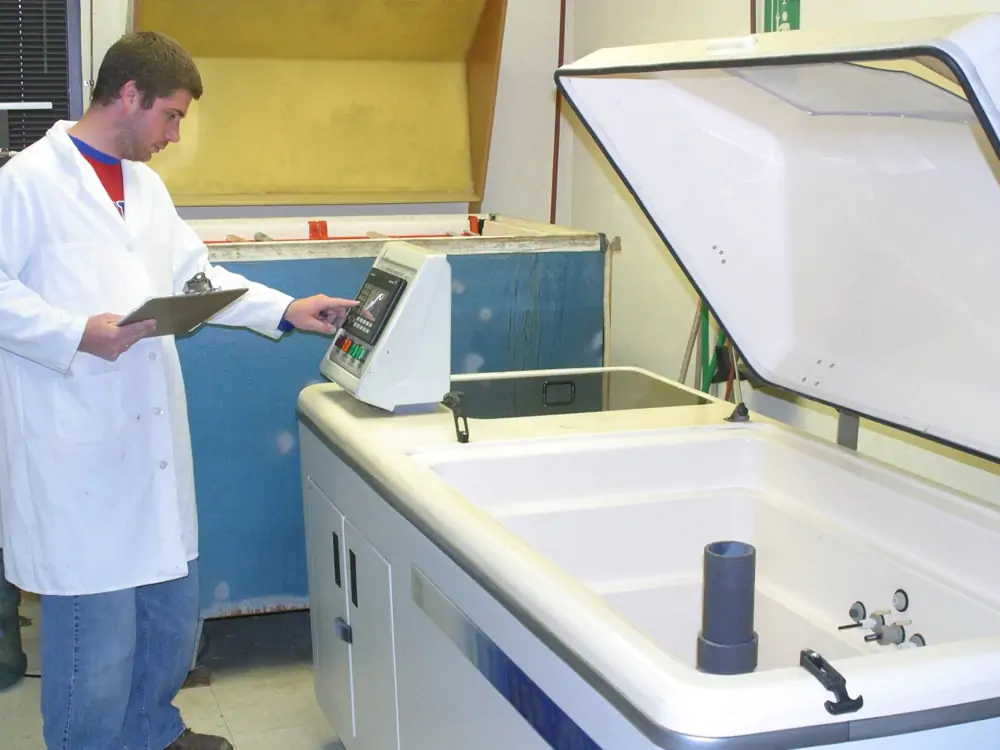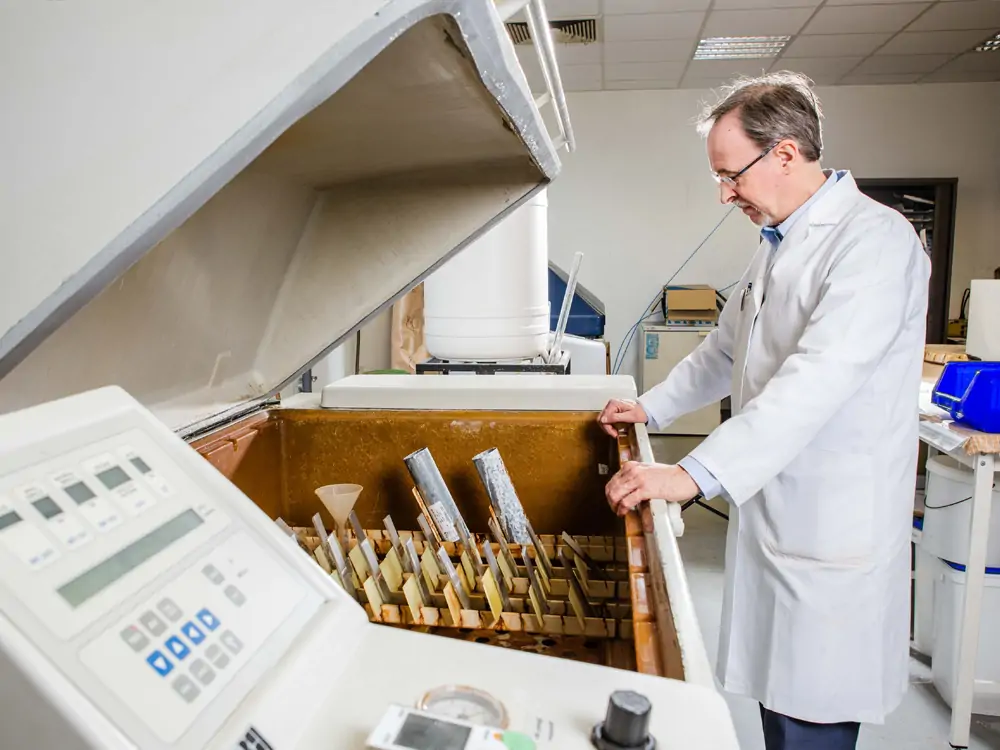Industries need to meet testing standards to ensure durable products. The ASTM G85 Salt Test simulates harsh environmental conditions. It assesses the product’s ability to withstand corrosion. This corrosion is due to salt exposure. It checks if a product can handle rust from salt. This rule helps makers and scientists see if a material can fight off rust. It pretends to be a real situation with salt spray. This includes automotive parts and electronic components. It is crucial in determining their durability and longevity.
To keep metal surfaces safe from corrosion, we use a method called salt spray testing. One advanced test for this is the ASTM G85 Salt Test. It’s the best way to check how well materials can resist corrosion. Scientists create conditions like salty mist in a controlled environment. This helps mimic tough places, like coastal areas. They test different coatings and treatments in factories. It helps to see how they hold up against corrosion.
In this article, we will learn about ASTM G85 and its importance in evaluating materials. This test determines the resilience of materials against corrosive forces.

Equipment and Materials for the ASTM G85 Salt Test Standard
When it comes to the ASTM G85 test, having the right equipment and materials is essential for reliable results.
- A Corrosion Chamber creates a controlled environment for the test standard. There are various sizes and designs of chambers. This chamber provides a consistent salt spray environment.
- Another is the Humidity Control Systemwhich maintains the testing conditions. This maintains the humidity levels in the specified test range. By controlling humidity, researchers can replicate real-world corrosion scenarios.
- In Sample Preparation, using appropriate materialsis important in ASTM G85 salt testing. Use non-corrosive materials such as plastic or glass containers. Store or transfer in containers to prevent contamination.
- Use Mounting Fixturesthat secure the test specimens inside the chamber during exposure.
Test Procedure for ASTM G85 Salt Testing
This salt test is widely used to check the corrosion resistance of materials. It provides valuable information to researchers about products. It provides information about products when they are exposed to corrosive environments. These include containing salt or other corrosive agents. This test requires careful attention to detail to ensure accurate results.
- The 1ststep is to prepare the specimens for testing. It includes cleaning to remove any contaminants.
- Then, the specimens are measured and weighed. They are placed in a controlled environment chamber. The chamber is filled with salt solution which is sodium chloride.
- The Chamber is sealed so that no external factors affect the test procedure.
- It is important to control and monitor the parameters inside the chamber during the test. This includes humidity and temperature.
- Then, the specimens are left in harsh environments for 24 hours up to several weeks. It depends on the desired level of evaluation.
- It is important to conduct regular inspections to see any changes in test samples. The changes are caused by corrosion reactions.
- After that, detailed analysis takes place using various techniques. This includes visual inspection, weight loss measurements, microscopy, and electrochemical methods.

Advantages of ASTM G85 Test Standard
- ASTM G85 replicates the effects of corrosion. It ensures materials test well under certain conditions.
- It is suitable for various materials. This includes coatings, painted surfaces, and metals. It makes it applicable in many industries.
- It ensures results are reliable and comparable across different studies.
- By subjecting materials to accelerated corrosion, ASTM G85 is a reliable test. It provides valuable data on long-term performance. It aids in design decisions and material selection.
- It allows rapid assessment of material performance. It reduces the need for expensive failures.
- It is beneficial for many industries, such as automotive, construction, and aerospace. It shows compliance with ASTM standards.
- This test helps manufacturers show product durability and quality. It gains a competitive edge in the market.
- This standard offers flexibility in test parameters. It allows tailored testing to stimulate specific conditions.
- This salt spray testing leads to significant savings in maintenance and replacement costs. It involves selecting materials with superior corrosion resistance.
Disadvantages of ASTM G85 Salt Test
- This salt test focuses on salt spray exposure. It does not replicate corrosive agents.
- The aggressive nature of the G85 test standard leads to accelerated corrosion. It causes severe damage under extended periods in natural conditions.
- ASTM G85 assesses corrosion and does not capture corrosion mechanisms. These mechanisms include crevice or pitting corrosion.
- There is a lack of uniformity that leads to inconsistencies and inaccurate result interpretation.
- It is a complex test in real-world conditions. It is challenging and leads to deviation in test results.
- Certain materials in salt testing have specialized coatings or alloys. They do not respond predictably and have misleading results.
- It is resource-intensive and requires specialized equipment. Also, it requires longer testing periods.
- This salt test standard is for metallic materials. It makes it less applicable for non-metallic substances.
- This test does not provide sufficient information on the performance of protective coatings.

Applications of ASTM G85 Test Standard
The ASTM G85 Test is a versatile method for evaluating corrosion resistance. Its applicability varies in various industries. This makes it a valuable tool for engineers and manufacturers.
Automotive Industry:
This test assesses the corrosion resistance of vehicle components. It ensures to withstand harsh conditions. This includes road salt and moisture.
Aerospace and Aviation:
Materials used in aerospace applications to check the stringent performance requirements. ASTM G85 testing helps ensure the durability and reliability of critical components. This contributes to the safety of air travel.
Marine Engineering:
Saltwater environments are corrosive to metals and alloys. By subjecting materials to ASTM G85 testing, marine engineers can select materials. This maintains integrity in marine applications. This includes shipbuilding and offshore structures.
Construction and Architecture:
Building materials used in coastal or industrial areas withstand exposure to corrosive elements. ASTM G85 testing aids in selecting materials that will have a longer service life. This reduces the maintenance and replacement costs.
Electronics and Electrical Equipment:
Electronics and electrical components get exposed to various environmental conditions. ASTM G85 testing ensures the components are functional and reliable in corrosive settings.
Coatings and Paint Industry:
The performance of protective coatings is crucial in preventing corrosion. ASTM G85 testing evaluates the effectiveness of coatings in resisting corrosion. This aids in the development of more durable and long-lasting formulations.
Metal Manufacturing and Processing:
Manufacturers of metals and alloys use ASTM G85 to assess corrosion resistance. This is critical for those who rely on these materials for their applications.
Environmental Testing and Research:
Researchers studying corrosion and material degradation use it as a standardized test method. It provides consistent and reliable data for scientific investigations and studies.
Automated Testing Systems:
Automated testing systems are designed to execute tests. This makes it easier for industries to incorporate into their quality control processes.
Educational Institutions:
ASTM G85 serves as a fundamental learning tool for students and researchers. This works well in materials science and engineering. It provides hands-on experience in corrosion testing methodologies.
Wrapping Up:
In conclusion, the ASTM G85 test standard for salt spray testing is a critical tool. This salt test helps to test the corrosion resistance of materials and coatings. If these samples undergo a controlled environment. They mimic real-world conditions and ensure the durability of products. Thus, this provides valuable insights into the performance of materials in different coatings. It also performs well under high salt such as coastal areas or industrial settings. It is important for engineers and manufacturers to understand this test standard. This is crucial for those who develop products under harsh conditions. By adhering to the ASTM G85 test standard, companies get an advantage over others. This advantage offers durable and corrosion-resistant products to their customers.
For more environmental test chamber, Please visit: https://chiuventionclimatechamber.com
For more environmental test simulation programmes,environmental testing knowledge, instrument knowledge, and environmental testing laboratory knowledge, please contact us: [email protected]